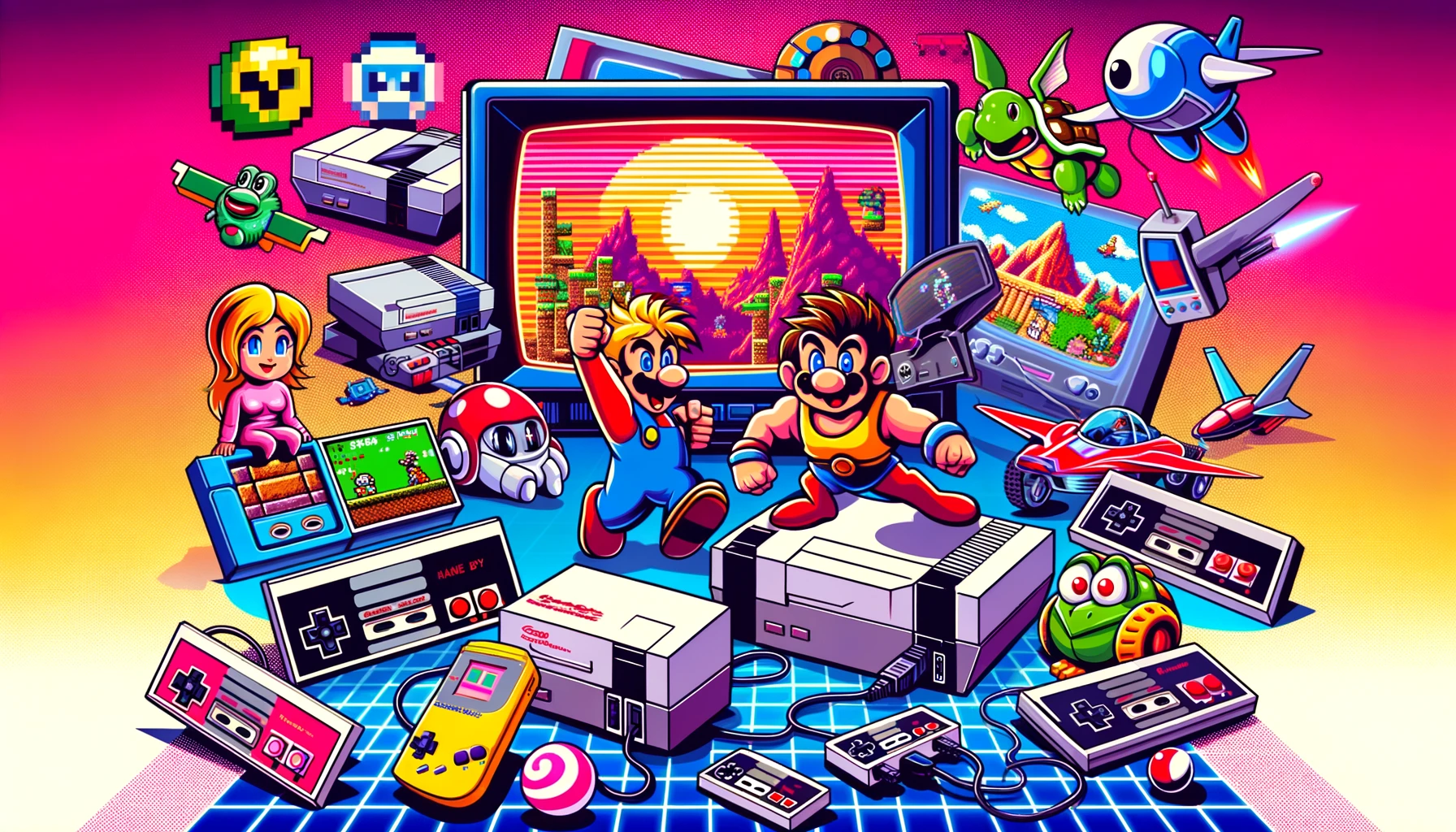Video games hold a special place in the hearts of many, particularly those who grew up in the 80s and 90s. These decades saw the emergence and consolidation of video games that have become today’s true classics. Let’s dive into a retrospective of these iconic video games that marked our childhood and defined a generation.
Super Mario Bros. (1985)
Released in 1985 by Nintendo, Super Mario Bros. is arguably the most emblematic game of that era. Guiding Mario, an Italian plumber, through the Mushroom Kingdom to save Princess Peach, this platform game redefined the standards of the genre. With its ingeniously designed levels, catchy music, and unforgettable characters, Super Mario Bros. laid the groundwork for many sequels and solidified Nintendo’s place in the video game industry.
The Legend of Zelda (1986)
Another creation by Nintendo, The Legend of Zelda is an adventure game that introduced players to Hyrule, a vast and immersive world. Playing as Link in his quest to save Princess Zelda and recover the Triforce captivated millions of players. The combination of exploration, puzzle-solving, and combat made Zelda a legendary series, whose influence is still felt today.
Tetris (1984)
Few games have reached the universal popularity of Tetris. Created by Alexey Pajitnov in 1984, this simple yet addictive puzzle game of stacking blocks of various shapes has become a global phenomenon. The version for Nintendo’s Game Boy, released in 1989, particularly contributed to its success, making Tetris a must-have for players of all ages.
Sonic the Hedgehog (1991)
To compete with Mario, Sega launched Sonic the Hedgehog in 1991. Sonic, the supersonic blue hedgehog, quickly became Sega’s mascot. The fast gameplay and colourful levels captivated a new generation of players. Sonic the Hedgehog was not only a commercial success but also helped Sega carve a strong reputation in the industry.
Street Fighter II (1991)
The fighting game genre underwent a true revolution with Street Fighter II, released by Capcom in 1991. This game popularised one-on-one fights and introduced emblematic characters like Ryu, Ken, Chun-Li, and Guile. Complex combos and competitions amongst mates in arcade halls contributed to making Street Fighter II a cult game, laying the foundation for future fighting games.
Pokémon Red and Blue (1996)
In 1996, Nintendo made a huge splash with Pokémon Red and Blue on Game Boy. This role-playing game allowed players to capture, train, and battle with fantastic creatures called Pokémon. The slogan “Gotta Catch ‘Em All” became a real obsession for many kids around the world. The phenomenal success of Pokémon spawned a multimedia franchise including animated series, trading cards, and much more.
Final Fantasy VII (1997)
Final Fantasy VII, released by Square Enix in 1997 on PlayStation, revolutionised the role-playing game (RPG) genre with its deep storytelling, complex characters, and dazzling graphics for the time. The story of Cloud Strife and his fight against the Shinra corporation and the formidable Sephiroth touched the hearts of many players, making this game an instant classic and a cornerstone of the RPG genre.
Conclusion
These video games are not just entertainment; they are pieces of history that have shaped our childhood and influenced popular culture. Their impact continues to be felt through the many sequels, remakes, and inspirations they have spawned. Diving back into these classics, one cannot but feel nostalgic for a time when simply playing a video game could create unforgettable memories. These titles have not only defined a generation, but they also continue to inspire new waves of players around the world.
